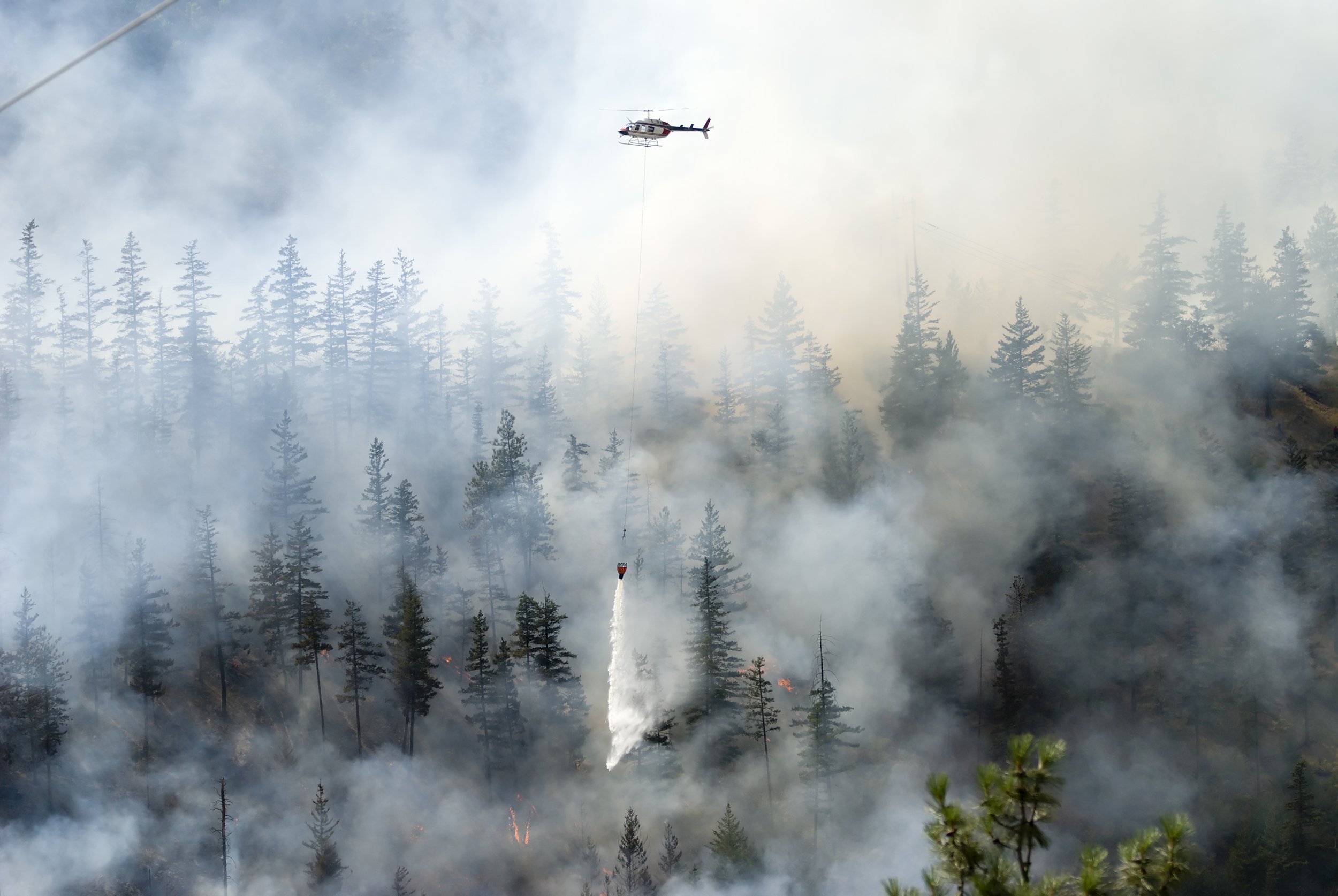The swirling smoke cloud that engulfed the East Coast last week, caused by wildfires hundreds of miles away, turned horizons a hellish orange, caused zero-visibility, forced the cancellations of activities ranging from Broadway plays to baseball games, and, ultimately, dramatized the fearsome specter of unchecked global warming.
As climate change accelerates, wildfires threaten not only to intensify but also diversify—sparking at unusual times and places. Although Canada has active wildfire seasons every year, the outbreaks are usually clustered in the western provinces, which, except for British Columbia, are sparsely populated.
The intensity of the wildfires in Quebec is matched by their proliferation. “Across the country as of today, there are 414 wildfires burning, 239 of which are determined to be out of control,” Federal Minister of Emergency Preparedness Bill Blair said at a press conference last week. According to Reuters, Canada is on track for its worst-ever year of wildfires, and with three months left to go in the season, Quebec has already eclipsed its previous high for outbreaks.
While climate change has wrought damage in specific locales, it has also had a domino effect clearly reflected by the Quebec fires. The byproduct of the outbreaks in Canada can be felt several hundred miles away, in Philadelphia, New York, and Washington, D.C. That was also the case on May 31, when wildfires in Nova Scotia forced the American Lung Association to release an air quality alert for Pittsburgh. Then, a few days ago, the Pennsylvania Department of Environmental Protection declared a Code Red for its air quality, signifying hazardous conditions for the general public. In New York City, the AQI reached 400 (on a scale of 500, as determined by the Environmental Protection Agency), indicating serious risks for many and Susquehanna Valley registered an astonishing 448 rating on June 8.
To those with chronic respiratory illnesses such as COPD, emphysema, and asthma, the last week has been a potential disaster. When considering the effects of such an unexpected event, pre-existing conditions also have to be calculated. Debra Smit, director of communications for the Breathe Project, told the Pittsburgh-Post Gazette that the smoke clouds from Quebec exacerbate the already-existing poor air quality in Allegheny County. “When wildfires and fires add to this, a result of climate change, it mixes with the industrial pollution we are already seeing coming from the U.S. Steel plants in the Mon Valley, adding serious risk to people’s health,” she said. “Children in Clariton and Braddock already have a three-times higher rate of asthma compared to the rest of the U.S. Layer wildfire pollution on top of that and it’s a serious problem for our residents.”
Remaining indoors is the only safe option for those with respiratory issues. But even that strategy is limited when considering older housing stock. Gaps and cracks in, for example, a Queen Anne house in Shadyside or Friendship may allow particulate matter to infiltrate the building at levels that may exacerbate asthma or cause nasal and lung irritation. Mitigating this situation is possible through the use of air conditioners (set on recirculate) or air purifiers, which filter pollutants.
Architecture has responded to air quality issues directly and indirectly with Passive House initiatives (including air-tight design to limit leaks) and high-performance construction (which features high-grade HVAC units and sensors to measure pollutant levels), and to ensure safety, it is worth investing in some of these design strategies for another potential calamity.
All signs point to more frequent and severe wildfires in the future, virtually guaranteeing similar unhealthy conditions as we have seen on the East Coast. (Worse, when numberless trees burn during wildfires, they release carbon dioxide, absorbed and stored for years, back into the atmosphere, creating a vicious circle: Air quality gains earned from years of applied sustainability measures are lost when wildfires burn out of control.) In California, wildfire seasons last longer, and in the Pacific Northwest, they are more frequent due to recent record-breaking heat waves, creating tinder-like conditions in forest areas that are susceptible to everything from an errant cigarette to a lightning strike.
Building with climate resistance in mind—a variation of future-proofing—can ensure the health of the public during real-time emergencies, but there is only one way to arrest global warming: through concerted efforts to reduce greenhouse gases and carbon emissions across every industry possible.


